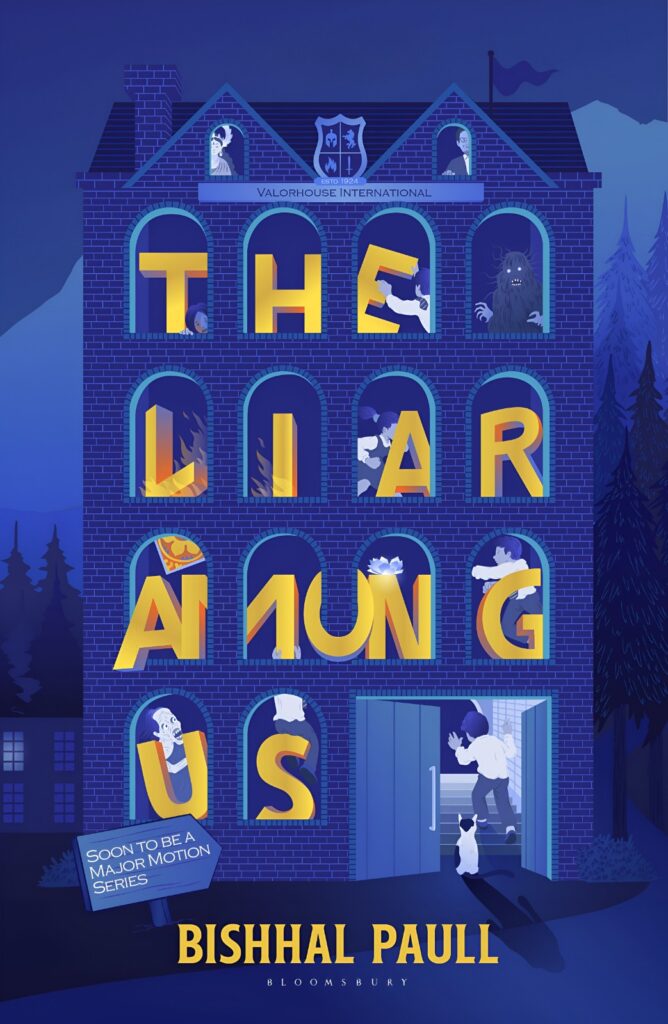Unmasking the Truth: A Conversation with Author Bishhal Paull
Unmasking the Truth: A Conversation with Author Bishhal Paull
In today’s session of Talk Time with Samata, we step into the mind of one of India’s most intriguing new voices in young adult fiction—Bishhal Paull, the filmmaker-turned-author whose debut novel The Liar Among Us has already begun reshaping the landscape of Indian YA. From the mist-veiled hills of Sikkim to the shadow-drenched corridors of Valorhouse International, Bishhal brings a cinematic brilliance and psychological depth rarely seen in the genre. In this conversation, he opens up about his creative journey, the secrets behind his haunting settings, the thin boundaries between truth and illusion, and the stories still waiting to be told. Let’s dive in.
Welcome to this session of Talk Time with Samata. Bishhal Ji me and my audience would love to know a bit about you before we proceed in this session. Please share us about your profession, education and background before becoming an author.
Hi, I’m Bishhal Paull, and before becoming an author I lived many creative lives—filmmaker, political strategist, digital storyteller. I studied filmmaking, worked on political campaigns, directed documentaries, and spent years inside rooms where narratives decide outcomes. Writing a novel was my way of reclaiming storytelling for myself and my audiences.
Your debut novel, The Liar Among Us, unfolds in the misty hills of Sikkim and inside the dark corridors of a boarding school. What inspired this setting, and how did you craft its eerie, almost cinematic atmosphere?
Sikkim has always fascinated me—mist, monasteries, silence that feels alive. Boarding schools, too, have this built-in mystery. I wanted a setting where the land itself feels like it’s keeping secrets. So I crafted the atmosphere like I would a film—tight corridors, fog-covered trails, whispers in the dark, letting the visuals shape the fear.
You come from a filmmaking and political strategy background. How did your experiences behind the camera and in public storytelling influence your approach to writing a novel?
Filmmaking taught me pacing, framing, and tension. Political strategy taught me how people behave when no one’s watching. Both worlds helped me approach the novel like a psychological blueprint where every scene had a character purpose, every character had an agenda.
The story weaves together mystery, suspense, and the supernatural. What drew you to blend these genres, and how did you strike the balance between the psychological and the paranormal?
I grew up loving thrillers, but I’ve always believed that the scariest ghosts live inside us. Blending mystery with the supernatural let me explore that thin space where imagination becomes belief. The balance came from treating the paranormal as an emotional truth and not just as jump scares.
Angad Sandhu, your protagonist, is a freshman seeking recognition. What part of him, if any, reflects your own younger self or your personal experiences in competitive environments?
Angad’s hunger for recognition is something I deeply relate to. When you’re young and thrown into competitive environments, you want to prove you matter. I’ve felt that pressure in politics, in film campaigns, everywhere. Angad carries that same restless energy, just dialled up.
At the heart of The Liar Among Us lie secrets, morality, and the thin line between truth and deception. What message or question do you hope readers will carry with them after finishing the book?
I want readers to walk away wondering: How far would I go to protect my truth? The book plays with the idea that everyone lies; sometimes to survive, sometimes to belong, sometimes to hide from themselves. The real suspense is not “who lied” but “why.”
Valorhouse International feels like a character in itself—mysterious, watchful, and full of secrets. Was this intentional? How did you bring the school to life as more than just a backdrop?
Yes, absolutely intentional. Valorhouse is that strange ecosystem where rules bend and shadows have opinions. I treated the school as a living organism—its walls listen, its traditions control, its myths breathe. It’s not just a place; it’s a character with motives.
Durjoy Datta called you “a groundbreaking voice Indian YA was missing.” How do you see your novel contributing to the growing landscape of Indian young adult fiction?
Indian YA has mostly avoided personal emotional stories. I wanted to bring a local, culturally rooted thriller that feels global in craft. If my book pushes YA into bolder spaces where genre, emotion, and social complexity coexist, then I’m grateful.
The book’s premise—a missing boy and a haunting confession—feels tailor-made for the screen. Do you envision The Liar Among Us being adapted into a film or web series someday?
I’d love to see it on screen. The structure is already episodic with confessions, disappearances, unreliable narrators. If the right creative team comes along, I think Valorhouse would make an incredibly atmospheric series.
Given your success in digital marketing and political consulting, you’re used to shaping narratives that influence public opinion. How different—or similar—was it to build a fictional world where truth itself is under question?
In political consulting, you shape narratives knowing they’ll be judged in real time. In fiction, you build a world where you control truth itself. Oddly, the processes are similar as both ask: What do people believe, and why? The difference is freedom. In a novel, I’m not bound by facts but only emotional honesty.
The supernatural elements in the book often mirror real-world fears and inner demons. Were you using the paranormal as a metaphor for something deeper—perhaps societal or psychological?
Yes. The supernatural is a metaphor for unresolved guilt, buried memories, and societal expectations. Baka, the dark deity, represents every fear we refuse to acknowledge. Sudrika, its opposite, stands for the quiet strength we underestimate.











Leave a Reply